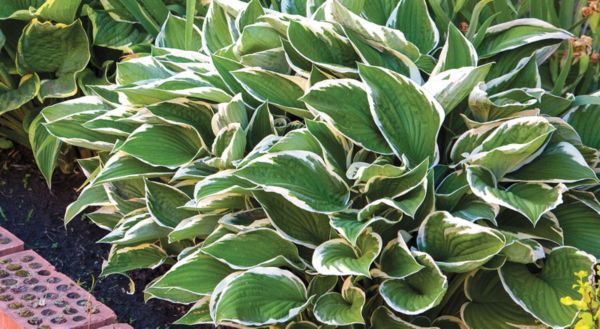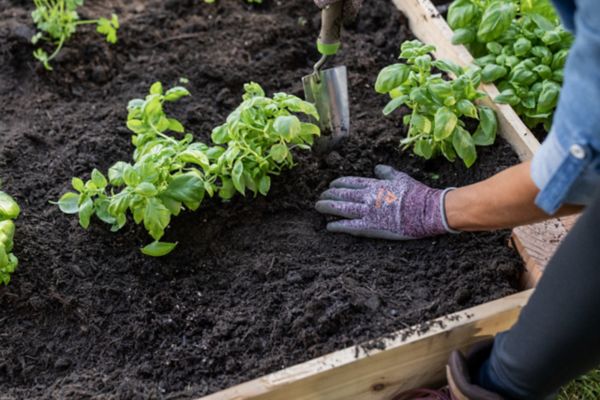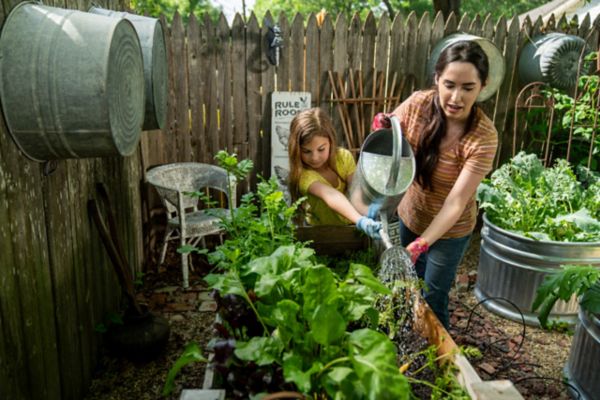How to Grow Cucumber
Authored by Leah Chester-Davis
Cucumbers are high in nutrients like vitamin K, vitamin A, antioxidants, lignans, all of which contribute to a healthier body and help fight off disease. They are low in calories because they are made up of mostly water.
Cucumbers are one of the most popular vegetables to grow in the home garden. Botanically, they are fruits in the same family as watermelons and pumpkins, but most people call them veggies. They are easy to grow and are favored for their crisp, cool, refreshing crunch. They thrive in relatively high temperatures, and even when the weather is hot, the inside of the cucumber is said to be 20 degrees cooler. That must be where the expression, “cool as a cucumber” comes from, though the phrase isn’t referring to the temperature but, rather, how calm and collected a person may be under pressure.
There are so many ways to enjoy cukes. It’s hard to beat small, freshly picked cukes as a snack. Simply wash them and take a bite of that crunchy goodness. They are also favored for many kinds of salads, from green salads to pasta salads to tabbouleh. They pair beautifully with other summer vegetables and herbs that are in abundance such as tomatoes, onions, radishes, and mint, dill, and parsley. They make great dips mixed with yogurt and dill, like tzatziki, or cut them into sticks to dip into hummus. They can even be thrown into stir fries or used for soups.
Some gardeners grow cucumbers for one reason only: to make pickles! Whether you make dill, bread and butter, gherkins, refrigerator, kosher, sour, or any other kind of pickle, few things are more rewarding than growing cucumbers and then making them into pickles you can enjoy year-round.
About cucumber
| Botanical name: | Cucumis sativus |
| Common name: | Cucumber |
| Plant type: | Annual |
| Size: | .75 to 2 feet high and 3 to 8 feet wide |
| Sun exposure: | Full sun |
| Soil type: | Fertile, well-drained |
| Soil pH: | 6.0 to 6.5 |
| Hardiness zones: | 2 to 11 |
| Average first frost: | Varies by region |
| Average last frost: | Varies by region |
| Container friendly: | Yes, particularly dwarf-vined or bush types |
| Beginner friendly: | Yes |
Growing
Cucumbers are warm-season plants and grow best in full sun, at least 8 hours per day. They need loose, fertile, organically rich, well-drained soil that is slightly acidic, 6.0 to 6.5 pH. Adding 4 to 6 inches of well-rotted manure or compost in the spring or fall helps improve soil. Work into the soil to a depth of about 10 inches. It’s helpful to get a soil test every three or so years and follow the recommendations. Soil test kits are available for free or a nominal fee from your county Extension office.
When selecting seeds, consider your preferred use. Some cucumbers are grown for slicing, dicing, and eating fresh; others are grown for pickling. You also may come across pollination information when selecting seeds:
- Standard or monoecious have both male and female flowers and require bees to carry pollen from the male flowers to the female flowers.
- Gynoecious varieties are special hybrids that produce predominately female flowers, and they are typically packaged with a monoecious variety to help ensure adequate pollination.
- Parthenocarpic have female flowers that produce fruit without pollination. This type of seed is useful when pollinator activity is severely limited or when growing in a greenhouse or high tunnel.
Planting
Cucumbers can be started in peat pots and then transplanted into the garden after the danger of frost has passed. Start them around two to three weeks before they are to be planted outside. Or they can be directly sown into the garden after the danger of frost has passed and when the soil temperature has warmed up to 70 degrees F or more. Soil thermometers are inexpensive and available in the garden center.
After you have worked your soil so that it is loose and friable, plant seeds about ½-inch deep and space them about 10 to 12 inches apart in rows that are 4 to 5 feet apart. If trellising, plant 3 to 4 seeds per foot in rows spaced 30 inches apart. When plants are about 4 inches high, thin so they are about 9 to 12 inches apart.
The days to maturity from seed are around 50 to 70 days (about 2 and a half months), depending on the variety.
For gardeners who have limited space or who may grow in a raised bed and want to use vertical space, use a trellis or other structure that the vines can climb. Another option is to plant varieties that have a bush habit, and may extend to around 18 inches or so, perfect for small spaces or even containers.
Cucumbers like water and will need about 1 inch of water weekly, either from rainfall or irrigation. Wet foliage can result in foliar diseases so it’s best to use drip or soaker hoses instead of sprinklers. Or hand water the soil around the plants. The plants may need more water when they begin to produce fruit.
Keep weeds at bay by light cultivation, being careful not to cultivate too deeply which could damage roots that grow close to the soil surface. Where needed, remove weeds by hand. As soon as the soil has warmed to 75 degrees F or more, add compost to help suppress weed growth and to help keep moisture. For added reinforcements against weeds, add a layer of newspaper, about 3 to 4 sheets thick around the plants and then top with a layer of straw or wood chips.
Fertilizing
If your soil has plenty of organic matter worked in, you may not need to fertilize at the time of planting. When the vines begin to run, side-dress with a complete fertilizer such as 13-13-13 or your favorite organic fertilizer. Follow label directions. Repeat every 2 to 3 weeks.
Controlling Pests, Diseases, and Other Problems
Many insects and diseases can affect cucumbers. Among them, cucumber beetles, spider mites, bacterial wilt, anthracnose, angular leaf spot, and powdery and downy mildew. Don’t let that long list scare you. Weed suppression is one of the first lines of defense against pests and diseases. As soon as the soil temperatures have warmed, get those layers of mulch down. When selecting seeds, look for disease-resistant varieties.
Water the soil at the base of the plant early in the day to keep the foliage dry and reduce chances of foliar diseases.
Harvesting and Storing
Harvest when the fruit is the desired size and dark green, firm, and crisp. For the best flavor and quality, harvest often and before the cucumbers turn yellow. For the best health of your vines, cut the fruits from the stems with a sharp knife or pruners. Cucumbers grow so quickly that you need to check your vines daily or every other day so that they don’t get too large. Regular harvesting will also keep the plant happy and productive. Depending on the variety, slicing cucumbers may be best around 6 to 8 inches long. Pickling cucumbers may be best around 2.5 inches and no more than 6 inches.
Storing
Cucumbers can be stored in the refrigerator for about a week to 10 days (about 1 and a half weeks). For pickling, the National Center for Home Food Preservation recommends an average of 14 pounds for a canner load of 14 quarts, or an average of 9 pounds for a canner of 9 pints. Select firm cucumbers and can within 2 to 3 days of picking for best quality. Use 1 ½ inch sizes for gherkins and 4 inches for dills. Odd-shaped or more mature cucumbers are good candidates for relishes and bread-and-butter style pickles. The center also provides several sweet pickle recipes.
Harvest when the fruit is the desired size and dark green, firm, and crisp.
Expert Tips
- Getting your soil tested, preparing your garden with plenty of organic matter, and cutting down on weeds will give your plants the best shot at being healthy and productive.
- Utah State Extension recommends planting 2 to 3 plants per person for fresh use and an added 3 to 5 plants for canning or pickling.
- All-America Selections (AAS) include favored varieties by horticulturists and gardening experts. Among recent winners that are worthy of consideration are: Cucumber Green Light F1, a mini cucumber that is great for vertical gardening and yields 40 or more spineless fruits per plant. This seedless cucumber is parthenocarpic, which means it does not need pollination. Parisian Gherkin F1 is a mini or gherkin pickling option that is also delicious in salads. It grows on a semi-vining plant, is disease resistant, and well suited for containers or raised beds. For those in colder climates, Pick a Bushel F1 sets fruit earlier on a bush-type plant. It can be picked early for pickling or left to grow to about 6 inches for salads or pickling. It’s another good option for containers. Ask your garden center, Extension office, or garden friends what grows best in your area.
Frequently asked questions
Why do I have poor fruit set on my cucumber vines?
It sounds like the flowers have not been adequately pollinated. If the weather has been cold, cloudy, or rainy, pollination can be reduced. Bees carry pollen from the male flowers to the female flowers (both grow on monoecious plants). Low bee activity can affect pollination. Take care of the bees by avoiding the use of pesticides, particularly during the bloom period. If bee activity is severely limited, there are Parthenocarpic varieties available which do not require pollination to set fruit. These are usually labeled as such in seed catalogs. ‘Diva’, an All-America Selections winner several years ago, is noted for its yields and flavor.
What causes cucumbers to be bitter?
A cool growing season or hot, dry weather could be the reason, or it could be the type of cucumber you are growing. The stem end and the peel may be more bitter than the rest of the fruit so cut away the end and peel the fruit. Look for varieties that are thinner skinned and seedless or those that are labeled bitter-free or nonbitter.





